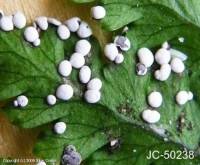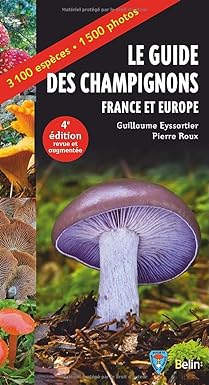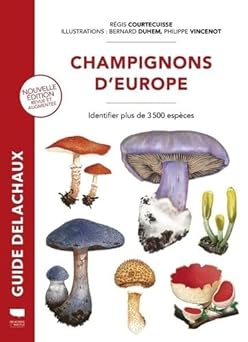
Il y a un seul champignon qui correspond à votre recherche :
| Diderma effusum (Schweinitz) Morgan (1894) |

|
Synonymes : Physarum effusum Schweinitz (1832), Transactions of the American philosophical Society, series 2, 4(2), p. 257 (Basionyme)
Didymium reticulatum Rostafinski (1874) [1873-74], in Fuckel, Jahrbucher des nassauischen vereins fur naturkunde, 27-28, p. 73 Chondrioderma reticulatum (Rostafinski) Rostafinski (1875) [1874], Sluzowce (Mycetozoa) monografia, p. 170 Chondrioderma saundersii Berkeley & Broome (1892), in Massee, A monograph of the Myxogastres, p. 209 Diderma effusum (Schweinitz) Morgan (1894), Journal of the Cincinnati Society of natural history, 16(4), p. 155 (nom actuel) Diderma reticulatum (Rostafinski) Morgan (1894), Journal of the Cincinnati Society of natural history, 16(4), p. 155, tab. 12, fig. 47 (nom. illegit.) Lignydium effusum (Schweinitz) Kuntze (1898), Revisio generum plantarum, 3, p. 490 Physarum crustiforme Spegazzini (1899) [1898], Anales del Museo nacional de Buenos Aires, serie 2, 3, p. 200 Chondrioderma reticulatum var. ß effusum (Schweinitz) Torrend (1908), Broteria, revista de sciencias naturaes do Collegio de S. Fiel, serie botanica, 7, p. 99 Diderma effusum var. reticulatum (Rostafinski) T. Macbride (1922), The North American slime-molds, Edn 2, p. 131 References : Poulain Meyer p. 190 Groupe : Myxos Classification : Amoebozoa / Myxogastrea / Physarida / Didymiaceae Chapeau/Fructification : Plasmodiocarpes, a dehiscence irreguliere, souvent issus de la fusion de plusieurs sporocarpes et pouvant etre reticules.Sporocarpes applatis de 0.3 a 0.4mm de hauteur. Peridium a couche externe calcaire blanche, lisse, couche interne membraneuse, incolore ou grisatre, ochracee a la base. Columelle pulvinee applatie, blanche, beige ou brun jaunatre. Stipe : non Habitat : Feuilles mortes, herbes, petites branches. Spores : 7-9 μm (-10µm), tres finement verruqueuses, avec groupes de verrues plus serrees. Comestibilite : Sans interet |

Pour vous accompagner lors de vos sorties mycologiques, MycoDB vous recommande les guides suivants :

